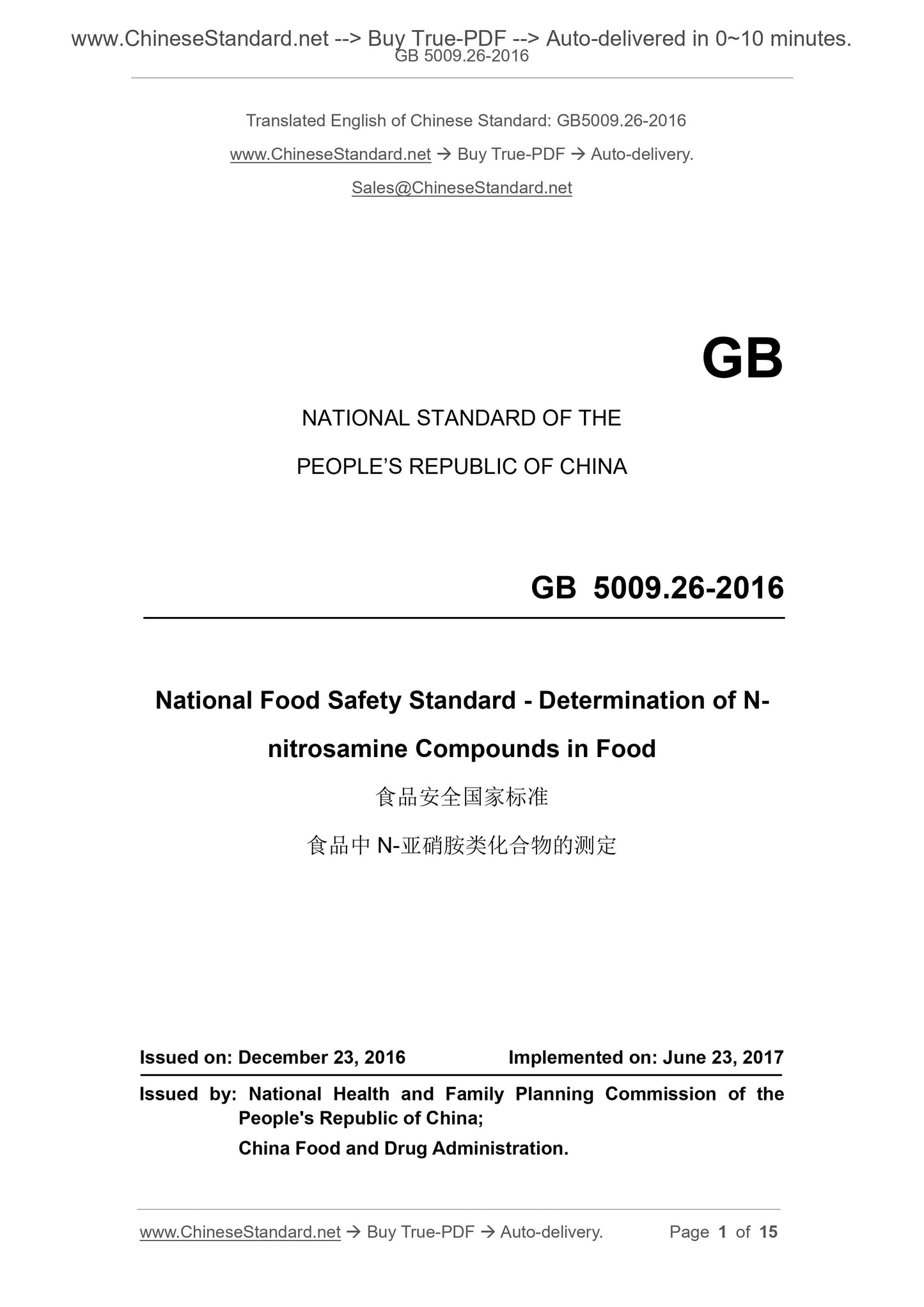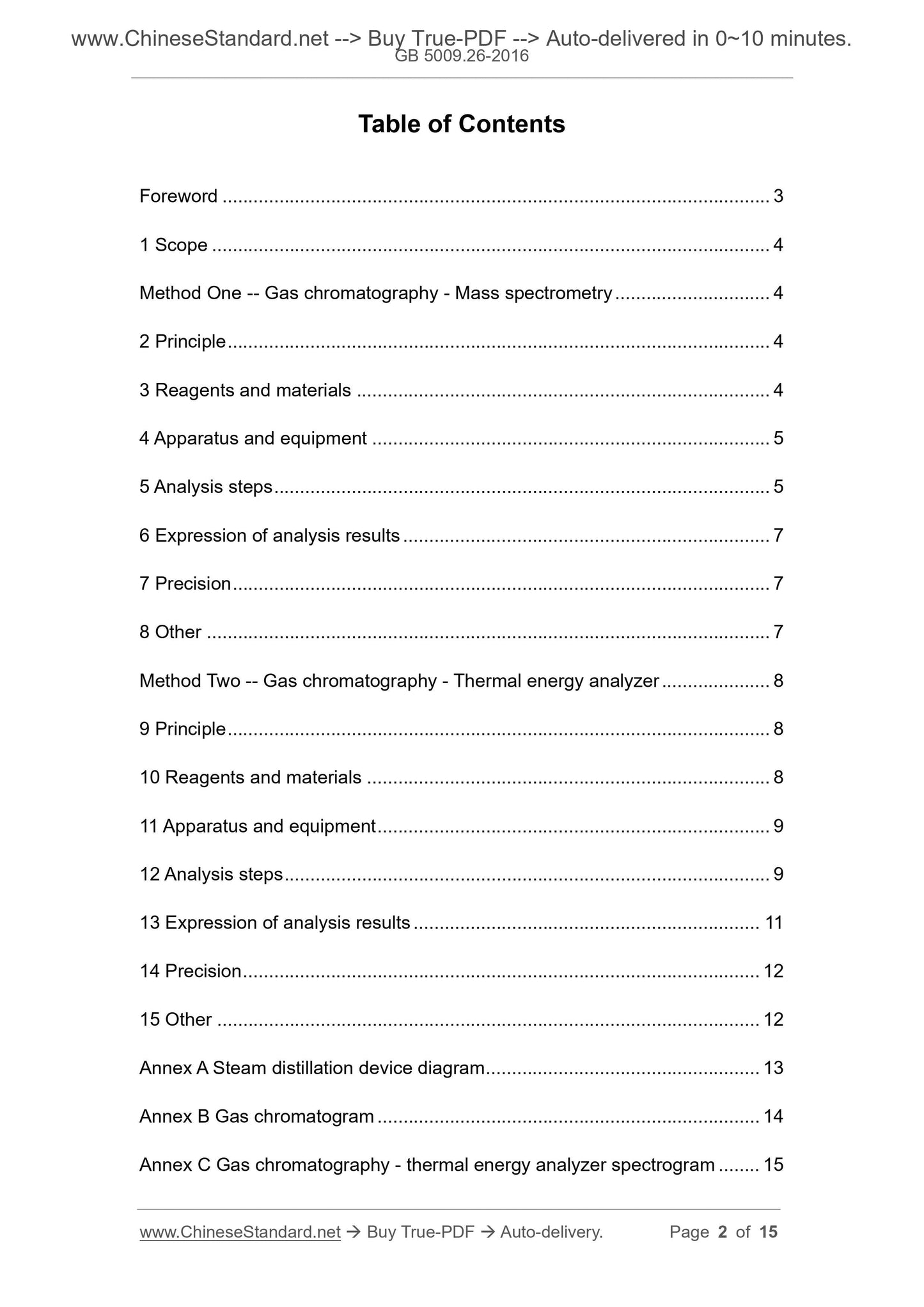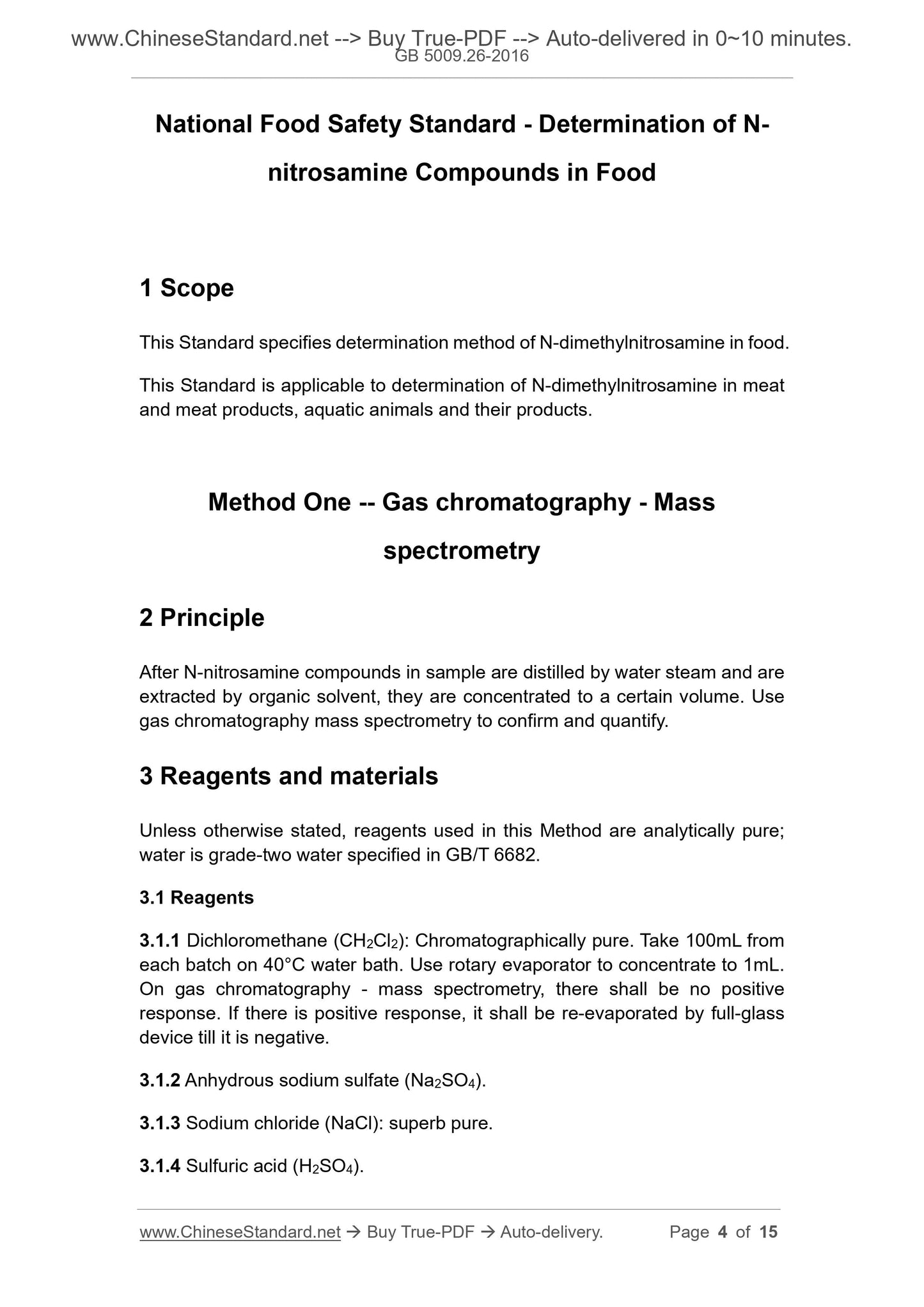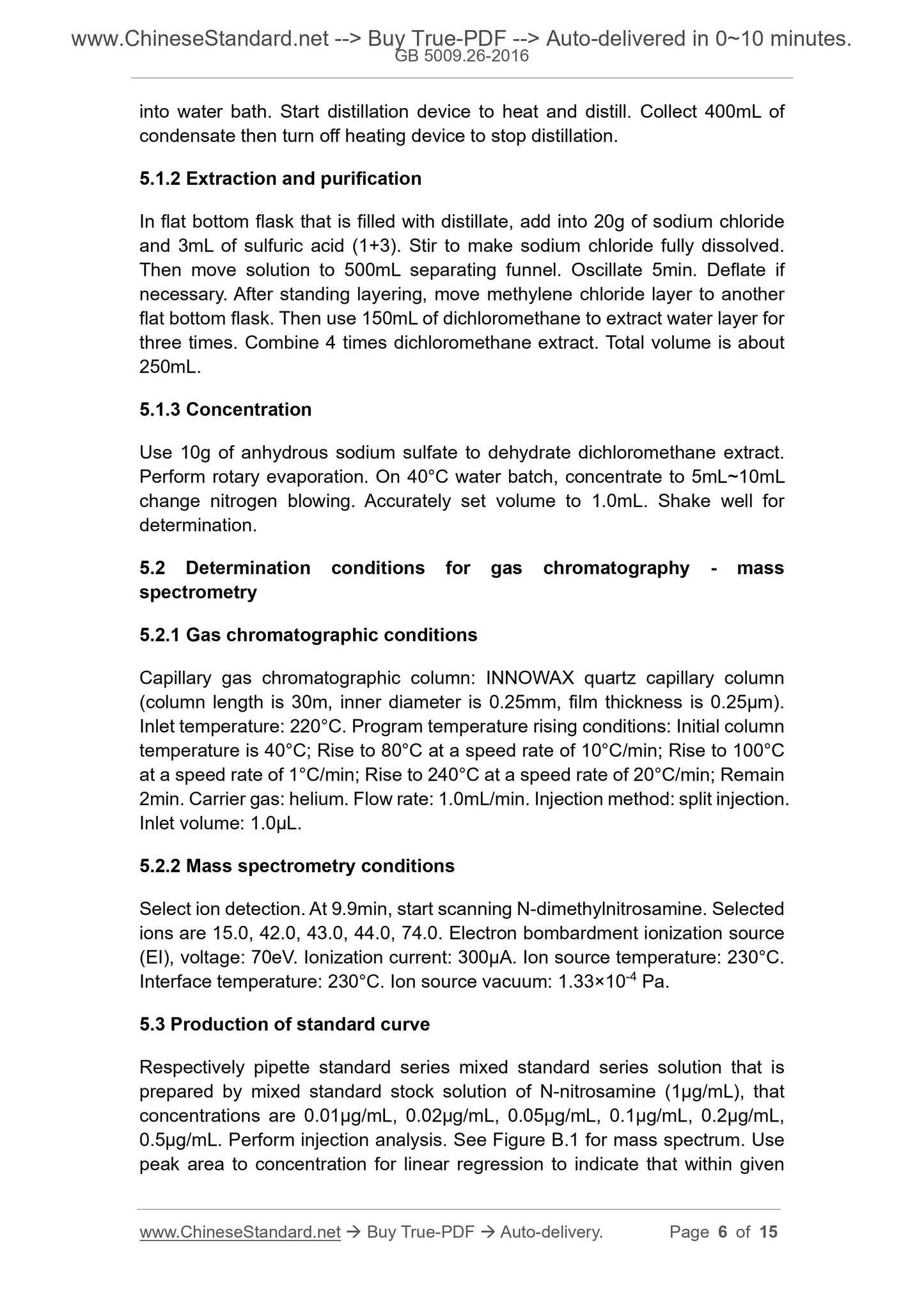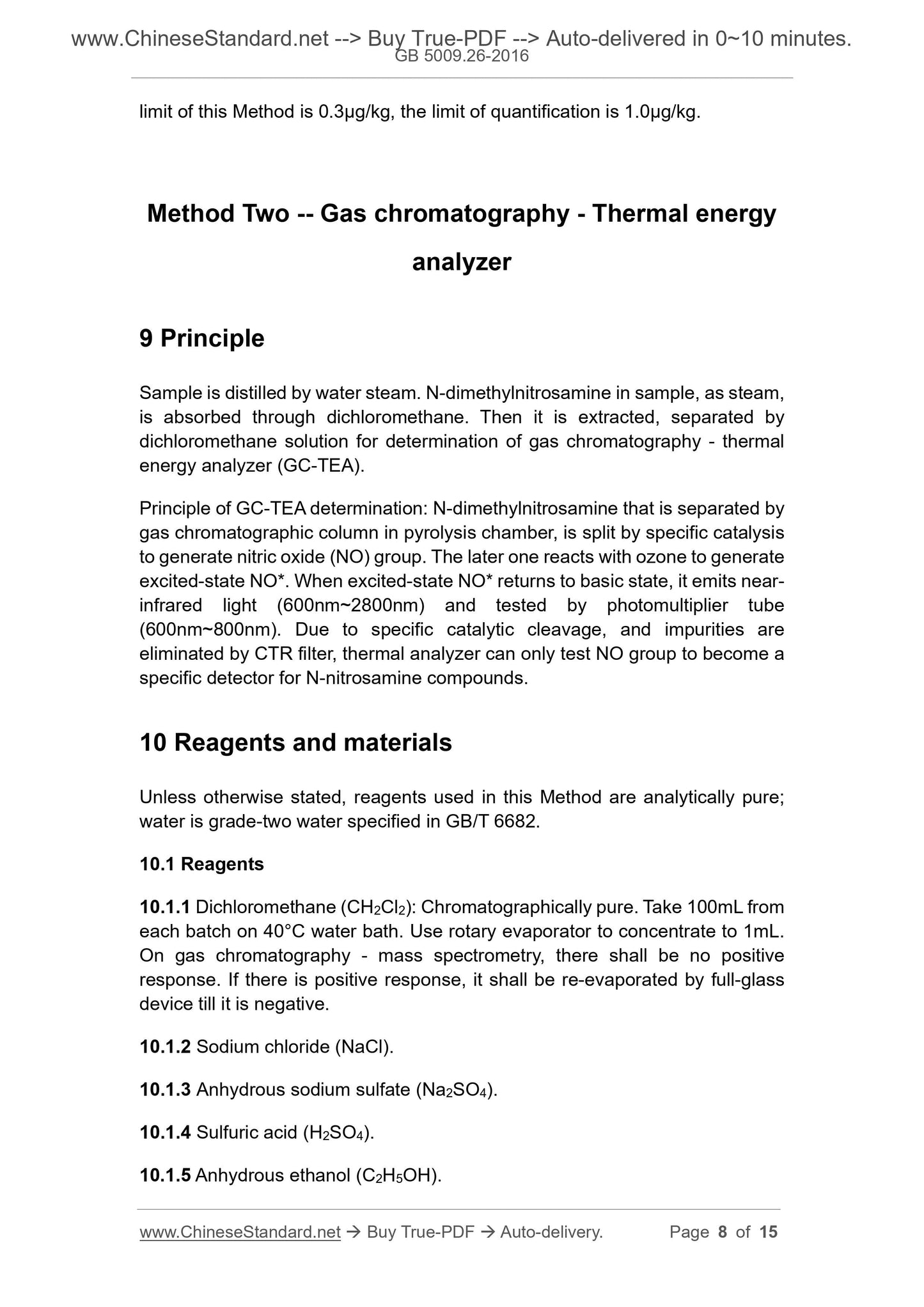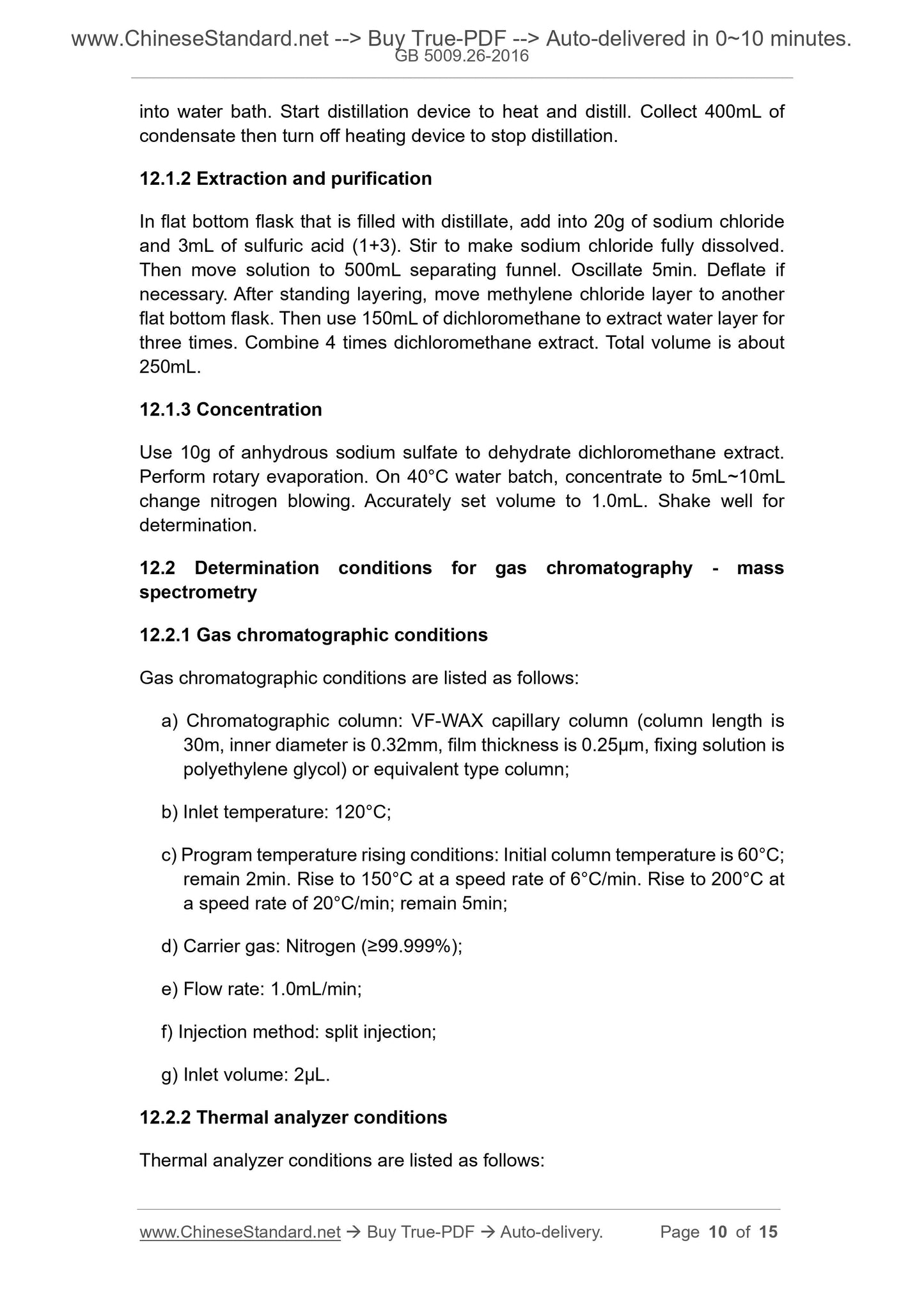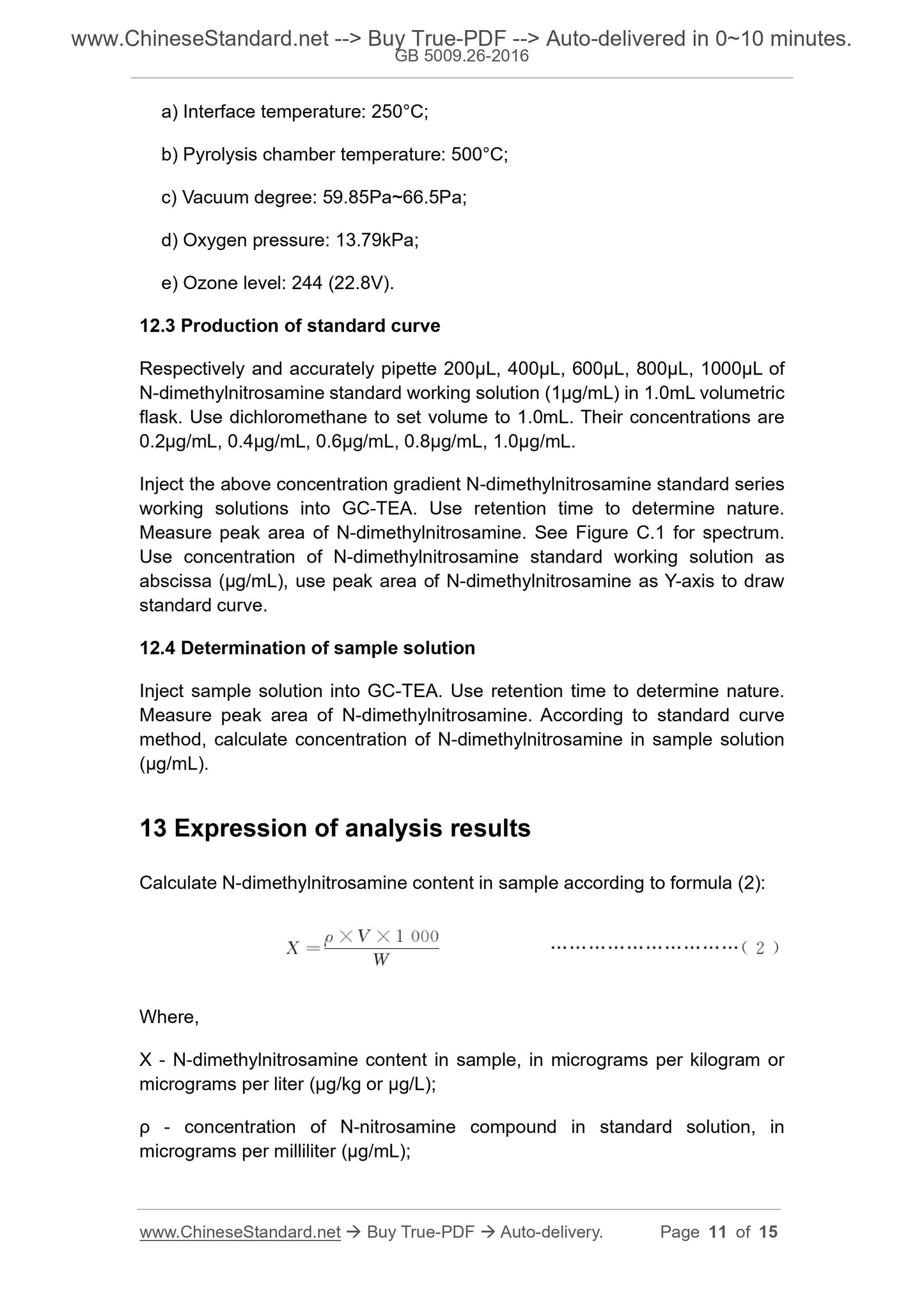1
/
of
7
PayPal, credit cards. Download editable-PDF & invoice in 1 second!
GB 5009.26-2016 English PDF
GB 5009.26-2016 English PDF
Regular price
$105.00
Regular price
Sale price
$105.00
Unit price
/
per
Shipping calculated at checkout.
Couldn't load pickup availability
GB 5009.26-2016: Determination of N-nitrosamines in foods
Delivery: 9 seconds. Download (and Email) true-PDF + Invoice.Get Quotation: Click GB 5009.26-2016 (Self-service in 1-minute)
Newer / historical versions: GB 5009.26-2016
Preview True-PDF
Scope
This Standard specifies determination method of N-dimethylnitrosamine in food.This Standard is applicable to determination of N-dimethylnitrosamine in meat
and meat products, aquatic animals and their products.
Method One -- Gas chromatography - Mass
spectrometry
Basic Data
| Standard ID | GB 5009.26-2016 (GB5009.26-2016) |
| Description (Translated English) | Determination of N-nitrosamines in foods |
| Sector / Industry | National Standard |
| Classification of Chinese Standard | C53 |
| Classification of International Standard | 67.040 |
| Word Count Estimation | 11,146 |
| Date of Issue | 2016-12-23 |
| Date of Implementation | 2017-06-23 |
| Older Standard (superseded by this standard) | GB/T 5009.26-2003 |
| Regulation (derived from) | National Health and Family Planning Commission Notice No.17 of 2016 |
| Issuing agency(ies) | National Health and Family Planning Commission of the People's Republic of China, State Food and Drug Administration |
| Summary | This standard specifies the determination of N-dimethylnitrosamine in food. This standard applies to the determination of N-dimethylnitrosamine in meat and meat products, aquatic animals and their products. |
Share
